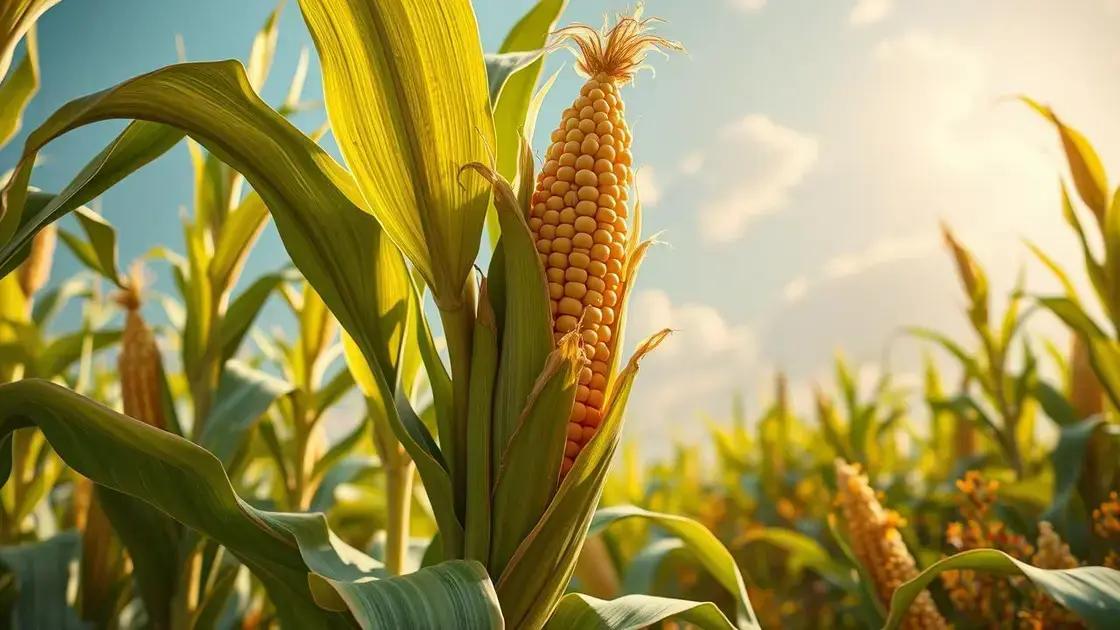How to Take Care of a Corn Plant: 7 Essential Tips You Must Know
How to take care of a corn plant is a question many gardening enthusiasts ponder as they embark on their green journey. Whether you’re a novice or possess some gardening wisdom, nurturing a corn plant can lead to a rewarding harvest. Discover essential tips and strategies to ensure your corn plant flourishes and thrives under your care.
Table of Contents
ToggleWatering techniques for a thriving corn plant
Watering techniques for a thriving corn plant are vital in ensuring your corn plant reaches its full potential. Appropriate watering not only promotes healthy growth but also prevents common issues that can arise from improper hydration.
Understanding Corn Plant Hydration Needs
Watering corn plants requires a balanced approach. These plants thrive in moist soil but dislike waterlogged conditions. Here are the key factors to consider:
- Soil type: Well-draining sandy or loamy soils are ideal.
- Climate: Adjust watering frequency based on temperature and humidity.
- Growth stage: Young corn plants have different needs compared to mature ones.
Best Practices for Watering Corn Plants
Follow these techniques for optimal watering:
- Check soil moisture: Stick your finger into the soil up to the first knuckle. If it feels dry, it’s time to water.
- Water deeply: Aim for 1 to 2 inches of water per week, either from rainfall or irrigation, focusing on the root zone.
- Water in the morning: Early watering reduces evaporation and allows plants to absorb moisture throughout the day.
Common Mistakes to Avoid
- Overwatering: This can lead to root rot; ensure proper drainage.
- Underwatering: Lack of moisture can stunt growth; be vigilant, especially during hot spells.
- Ignoring rainfall: Adjust your watering schedule based on local weather conditions.
Conclusion
By utilizing these effective watering techniques for a thriving corn plant, you can create an environment that fosters healthy growth and reduces the risk of pests and diseases. For more insights into gardening, consider exploring indoor gardening techniques.
Essential light requirements for corn plant health

Essential light requirements for corn plant health play a crucial role in the overall growth and development of your corn plants. Providing the right amount of light ensures that your plants can photosynthesize effectively, resulting in robust health and high yield.
Understanding Light Needs
Corn plants thrive in bright light. Here are the fundamental factors to consider regarding their light requirements:
- Light intensity: Corn plants prefer full sunlight, requiring at least 6 to 8 hours of direct sunlight daily.
- Light quality: The sunlight spectrum, especially red and blue light, is essential for healthy plant growth.
- Light duration: Consistent exposure to light helps regulate growth cycles, including flowering.
Optimal Lighting Conditions
Creating the right environment for your corn plants is essential. Follow these guidelines:
- Site selection: Choose a location that receives ample sunlight, preferably south-facing for maximum exposure.
- Supplemental lighting: In low-light areas, consider using grow lights to provide the necessary light spectrum for growth.
- Adjust for seasons: Monitor the sun’s position throughout the year and adjust plant placement if necessary.
Common Issues Related to Light
Improper light conditions can lead to several problems:
- Insufficient light: This can cause leggy growth and reduced yields as plants stretch toward the light.
- Excessive light: Overexposure can lead to sunburn on leaves, stunting growth.
Conclusion
By understanding and implementing the essential light requirements for corn plant health, you can foster an environment that promotes vitality and productivity. For further insights into gardening, don’t hesitate to explore indoor gardening techniques.
Fertilizing your corn plant for robust growth
Fertilizing your corn plant for robust growth is essential to ensure healthy development and a bountiful harvest. Providing the right nutrients at the right time can significantly impact the growth and yield of your corn plants.
Understanding the Nutritional Needs
Corn plants require a balanced supply of nutrients for optimal growth. Here’s a breakdown of the key nutrients:
- Nitrogen: Promotes vigorous leaf growth and overall plant health.
- Phosphorus: Supports strong root development and enhances flowering.
- Potassium: Aids in water regulation and disease resistance.
When and How to Fertilize Corn Plants
Fertilization practices should align with plant growth stages. Follow these steps:
- Soil testing: Begin by testing your soil to determine existing nutrient levels, guiding your fertilization efforts.
- Applying fertilizer: Use a balanced fertilizer with an N-P-K ratio appropriate for corn, typically around 10-10-10 or 20-20-20.
- Timing: Fertilize at planting time and again during the active growing phase, ensuring even nutrient distribution.
Common Fertilizing Mistakes to Avoid
- Over-fertilizing: Too much fertilizer can cause nutrient burn and harm plant roots.
- Ineffective application: Apply fertilizer uniformly to avoid uneven growth.
- Neglecting micronutrients: Remember that corn plants also need micronutrients like zinc and magnesium for overall health.
Conclusion
By understanding and implementing effective fertilization techniques, you can ensure your corn plant thrives and produces healthy yields. For additional tips on gardening practices, consider exploring indoor gardening techniques.
In conclusion
Caring for your corn plant requires attention to detail in various aspects, including watering, light, and fertilization. By understanding the essential light and fertilizer requirements and employing effective watering techniques, you cultivate a thriving corn plant that yields excellent results. As you expand your gardening knowledge, consider exploring additional resources and expert tips, such as tips on enhancing your indoor garden.

